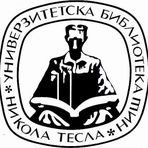Title
Posturalni status i telesni sastav dece školskog uzrasta
Creator
Đorđević, Stefan, 1990-
CONOR:
58349577
Copyright date
2022
Object Links
Select license
Autorstvo-Nekomercijalno-Bez prerade 3.0 Srbija (CC BY-NC-ND 3.0)
License description
Dozvoljavate samo preuzimanje i distribuciju dela, ako/dok se pravilno naznačava ime autora, bez ikakvih promena dela i bez prava komercijalnog korišćenja dela. Ova licenca je najstroža CC licenca. Osnovni opis Licence: http://creativecommons.org/licenses/by-nc-nd/3.0/rs/deed.sr_LATN. Sadržaj ugovora u celini: http://creativecommons.org/licenses/by-nc-nd/3.0/rs/legalcode.sr-Latn
Language
Serbian
Cobiss-ID
Theses Type
Doktorska disertacija
description
Datum odbrane: 14.10.2022.
Other responsibilities
Academic Expertise
Društveno-humanističke nauke
University
Univerzitet u Nišu
Faculty
Fakultet sporta i fizičkog vaspitanja
Group
Katedra za primenjenu kineziologiju
Alternative title
Postural status and body composition of school-age children
Publisher
[S. N. Đorđević]
Format
189 listova
description
Bibliografija: listovi 158-174.
description
Corrective gymnastics
Abstract (en)
Introduction: Contemporary living circumstances offer possibilities of a
progress in almost all spheres of life of one child, but there are also some
negative aspects such as hypo kinesis, postural disorders, and obesity. Results
of previous researches show that postural disorders and state of body
composition in a period of an early adolescence represent one of the fastest
growing health disorders in this age. In accordance with this, the main goal
of this research is to establish the condition and difference of the postural
state of the spine and body composition of children of seniour classes of
primary school as well as connection and influence of body composition and
postural status.
Method: The sample of respondents was comprised of 484 children of
primary-school age of both genders from the territory of the town Knjazevac.
This municipality represents a group of municipalities up to 30 000
inhabitants and such are located on the 49,6% of the territory of Serbia.
Instruments used for gathering measured parametres were: anthropometar
(SECA model 284; SECA, Hamburg, Germany), an instrument for
assessment of body composition Inbody 770, ( Inbody Co, Seoul, Korea) and
an instrument for diagnosing of postural status of the spine ( Formetric 4D
System, Diers, Germany). For the analysis of the gathered data were used:
descriptive and percentage analysis, Hi square test for testing independence
with Z test supplement was used to determine differences, ANOVA test was
used to determine trend of changes, Eta coefficient was used to determine
correlational values, and discriminatory analysis to determine the
contribution of parametres of body composition on postural status of the
spine.
Results: The results have indicated that in the sagittal plane the percentage
of postural disorders was present at 69,2% of the respondents (Male =67,5%;
Female 71,1%), while that percentage in the frontal plane was 39,5% (
M=32,5; F=47%). Also, a statistically significant difference was observed by
gender in the prevalence of the postural disorders and normal posture only
in the frontal plane (М=0.000; Ж=0.393) while this was not observed in the
sagittal plane of the spine (М=0.000; Ж=0.000). By analyzing the results,
only statistically significant difference between genders in the state of
postural status of the frontal plane was observed (total=0.001; by classes
V=0.053; VI=0.155; VII=0.186; VIII=0.050) while in the postural status of
the sagittal plane, a statistically significant difference between genders was
not observed (total=0.383; by classes V=0.359; VI=0.596; VII=0.009;
VIII=0.257). By ANOVA analysis was determined the presence of a
statistically significant trend of changes in all analyzed parametres for the
evaluation of body composition except PFM (sig=0.145). Eta coefficient has
indicated that there is a statistically significant correlation of the postural
status of the spine in the frontal plane and all parametres of body composition,
while with the postural status in the sagittal plane variables of body
composition that do not correlate are BMFkg (sig=0.072) and PBF
(sig=0.070). The results of the discriminatory analysis have indicated to the
existence of the statistically significant contribution of the paratmetres of
body composition (BFMkg=.875; PBF=859; RSMM=-.730; PFFM=-.658)
on the postural status in the sagittal plane of the spine, while the greatest
contribution were recorded in the variables (BFMkg=-.638; PBF=-.692;
RSMM=.734; PFFM=.615) on the postural status in the frontal plane.
Conclusion: It may be concluded that there is high prevalence of the postural
disorders of the spine in children of the senior classes in primary school,
primarily in the sagittal plane and that there is a gender difference in the
prevalence of the spinal deformities in certain regions. Also, in this age
period, based on the results of trend analyses, gender differences in body
composition parametres are clearly indicated: muscle mass, body fat mass as
well as different influence of the parametres of body composition on the state
of the postural status of the spine. In accordance with the findings obtained,
it is clear that the approach to solving the problem of the current state of the
postural disorders on the spine and the parametres of body composition must
be different according to gender but also according to age.
Authors Key words
Sagitalna ravan kičmenog stuba, frontalna ravan kičmenog stuba,
deca starijih razreda osnovnoškolskog uzrasta, telesne masti,
mišići, bezmasna masa tela, skolioza, kifoza, lordoza
Authors Key words
Sagittal plane of the spine, frontal plane of the spine, children of older
grades of primary school, body fat, muscles, fatless body mass, scoliosis,
kyphosis, lordosis.
Classification
615.82/84:616.711-053.5(043.3)
Subject
S 273
Type
Tekst
Abstract (en)
Introduction: Contemporary living circumstances offer possibilities of a
progress in almost all spheres of life of one child, but there are also some
negative aspects such as hypo kinesis, postural disorders, and obesity. Results
of previous researches show that postural disorders and state of body
composition in a period of an early adolescence represent one of the fastest
growing health disorders in this age. In accordance with this, the main goal
of this research is to establish the condition and difference of the postural
state of the spine and body composition of children of seniour classes of
primary school as well as connection and influence of body composition and
postural status.
Method: The sample of respondents was comprised of 484 children of
primary-school age of both genders from the territory of the town Knjazevac.
This municipality represents a group of municipalities up to 30 000
inhabitants and such are located on the 49,6% of the territory of Serbia.
Instruments used for gathering measured parametres were: anthropometar
(SECA model 284; SECA, Hamburg, Germany), an instrument for
assessment of body composition Inbody 770, ( Inbody Co, Seoul, Korea) and
an instrument for diagnosing of postural status of the spine ( Formetric 4D
System, Diers, Germany). For the analysis of the gathered data were used:
descriptive and percentage analysis, Hi square test for testing independence
with Z test supplement was used to determine differences, ANOVA test was
used to determine trend of changes, Eta coefficient was used to determine
correlational values, and discriminatory analysis to determine the
contribution of parametres of body composition on postural status of the
spine.
Results: The results have indicated that in the sagittal plane the percentage
of postural disorders was present at 69,2% of the respondents (Male =67,5%;
Female 71,1%), while that percentage in the frontal plane was 39,5% (
M=32,5; F=47%). Also, a statistically significant difference was observed by
gender in the prevalence of the postural disorders and normal posture only
in the frontal plane (М=0.000; Ж=0.393) while this was not observed in the
sagittal plane of the spine (М=0.000; Ж=0.000). By analyzing the results,
only statistically significant difference between genders in the state of
postural status of the frontal plane was observed (total=0.001; by classes
V=0.053; VI=0.155; VII=0.186; VIII=0.050) while in the postural status of
the sagittal plane, a statistically significant difference between genders was
not observed (total=0.383; by classes V=0.359; VI=0.596; VII=0.009;
VIII=0.257). By ANOVA analysis was determined the presence of a
statistically significant trend of changes in all analyzed parametres for the
evaluation of body composition except PFM (sig=0.145). Eta coefficient has
indicated that there is a statistically significant correlation of the postural
status of the spine in the frontal plane and all parametres of body composition,
while with the postural status in the sagittal plane variables of body
composition that do not correlate are BMFkg (sig=0.072) and PBF
(sig=0.070). The results of the discriminatory analysis have indicated to the
existence of the statistically significant contribution of the paratmetres of
body composition (BFMkg=.875; PBF=859; RSMM=-.730; PFFM=-.658)
on the postural status in the sagittal plane of the spine, while the greatest
contribution were recorded in the variables (BFMkg=-.638; PBF=-.692;
RSMM=.734; PFFM=.615) on the postural status in the frontal plane.
Conclusion: It may be concluded that there is high prevalence of the postural
disorders of the spine in children of the senior classes in primary school,
primarily in the sagittal plane and that there is a gender difference in the
prevalence of the spinal deformities in certain regions. Also, in this age
period, based on the results of trend analyses, gender differences in body
composition parametres are clearly indicated: muscle mass, body fat mass as
well as different influence of the parametres of body composition on the state
of the postural status of the spine. In accordance with the findings obtained,
it is clear that the approach to solving the problem of the current state of the
postural disorders on the spine and the parametres of body composition must
be different according to gender but also according to age.
“Data exchange” service offers individual users metadata transfer in several different formats. Citation formats are offered for transfers in texts as for the transfer into internet pages. Citation formats include permanent links that guarantee access to cited sources. For use are commonly structured metadata schemes : Dublin Core xml and ETUB-MS xml, local adaptation of international ETD-MS scheme intended for use in academic documents.


